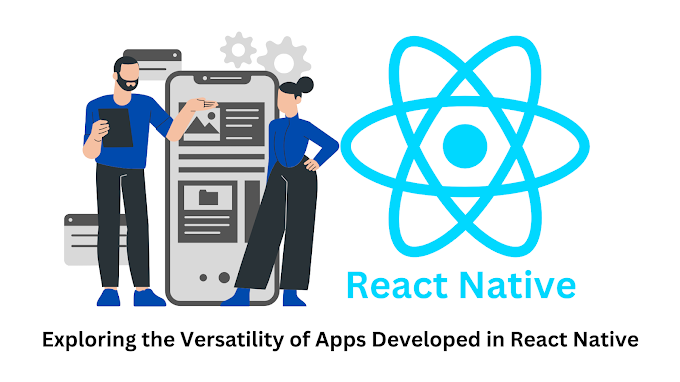Introduction
Embarking on a career in JavaScript programming is both exciting and challenging, and a key milestone on this journey is clearing the job interview. To help you excel, we've compiled a comprehensive guide featuring 20 common JavaScript programming interview questions that are frequently asked by companies. Each question is accompanied by a detailed explanation and a sample answer to equip you with the knowledge and confidence needed to ace your JavaScript programming interview.
1. Introduction: Preparing for JavaScript Programming Interviews
The Significance of JavaScript
JavaScript is a versatile programming language that runs in web browsers, making it essential for creating dynamic and interactive web applications.
The Interview Process
JavaScript programming interviews often involve a mix of technical questions, coding exercises, and problem-solving scenarios. Preparing thoroughly is vital to stand out in a competitive job market.
Tips for Success
Before diving into the interview questions, it's essential to review JavaScript fundamentals, practice coding, and sharpen your problem-solving skills. Be ready to explain your thought process and showcase your understanding of JavaScript concepts during interviews.
2. JavaScript Programming Essentials
Understanding JavaScript
JavaScript is a high-level, dynamically typed, and interpreted programming language. It is primarily used for web development but has also found applications in server-side scripting, game development, and more.
Key Features of JavaScript
JavaScript offers features like automatic memory management, event-driven programming, and a vast ecosystem of libraries and frameworks.
Why JavaScript Matters
JavaScript is crucial for creating modern web applications, enabling developers to build interactive and user-friendly websites.
3. 20 Common JavaScript Programming Interview Questions
Let's explore the 20 common JavaScript programming interview questions along with detailed explanations and sample answers.
Question 1: What is JavaScript, and where can it be used?
Answer: JavaScript is a versatile programming language used for creating dynamic and interactive web applications. It can be used in web development to add functionality to websites, create web-based games, build server-side applications using Node.js, and even develop mobile apps with frameworks like React Native.
Question 2: Explain the differences between 'let,' 'const,' and 'var.'
Answer: 'let' and 'const' are block-scoped variables introduced in ES6, while 'var' is function-scoped. 'const' variables cannot be reassigned, while 'let' variables can. 'var' variables are hoisted to the top of their function or global scope.
Question 3: How does JavaScript handle asynchronous programming, and what are Promises?
Answer: JavaScript uses an event-driven, non-blocking I/O model to handle asynchronous operations. Promises are objects representing the eventual completion or failure of an asynchronous operation. They provide a cleaner way to work with asynchronous code, allowing chaining and error handling.
Question 4: What is the Event Loop in JavaScript?
Answer: The Event Loop is a critical part of JavaScript's concurrency model. It continuously checks the message queue for pending tasks, executes them one at a time, and maintains the responsiveness of the JavaScript runtime.
Question 5: Discuss the significance of closures in JavaScript.
Answer: Closures allow functions to retain access to their outer function's scope even after the outer function has finished executing. They are crucial for encapsulation and maintaining state in JavaScript.
Question 6: Explain the concept of hoisting.
Answer: Hoisting is a JavaScript behavior where variable and function declarations are moved to the top of their containing scope during the compilation phase. Variables declared with 'var' are hoisted but initialized with 'undefined,' while variables declared with 'let' and 'const' are hoisted but not initialized.
Question 7: What are Arrow Functions, and how are they different from regular functions?
Answer: Arrow functions are a concise way to write functions in JavaScript. They have a shorter syntax and do not bind their own 'this' value. Arrow functions cannot be used as constructors.
Question 8: What is the 'this' keyword in JavaScript?
Answer: 'this' refers to the current execution context. In JavaScript, 'this' can change depending on how a function is called. It often points to the object that called the function.
Question 9: Describe the differences between 'null' and 'undefined.'
Answer: 'null' is a value that represents the intentional absence of any object value, while 'undefined' means that a variable has been declared but has not been assigned a value.
Question 10: What is the role of the 'bind' method in JavaScript?
Answer: The 'bind' method allows you to create a new function with a specified 'this' value and initial arguments. It is often used to ensure that a function is executed with a specific context.
Question 11: Explain the concept of Callbacks and Callback Hell.
Answer: Callbacks are functions passed as arguments to other functions, often used in asynchronous programming. Callback Hell (or Pyramid of Doom) occurs when multiple nested callbacks lead to unreadable and error-prone code. It can be mitigated using techniques like Promises or async/await.
Question 12: What is the purpose of the 'async' and 'await' keywords?
Answer: 'async' is used to declare that a function returns a Promise. 'await' is used inside an async function to pause execution until the Promise is resolved or rejected. This simplifies asynchronous code and makes it appear more synchronous.
Question 13: Discuss the concept of Object-Oriented Programming (OOP) in JavaScript.
Answer: JavaScript supports OOP concepts like encapsulation, inheritance, and polymorphism. Objects are created using constructors or classes (introduced in ES6), and properties and methods can be added to objects dynamically.
Question 14: What are Prototypes and Prototypal Inheritance in JavaScript?
Answer: Prototypes are objects that serve as a blueprint for other objects. In JavaScript, objects can inherit properties and methods from their prototypes, creating a chain of prototype objects.
Question 15: Explain the concept of closures.
Answer: Closures are functions that have access to variables from their outer function's scope, even after the outer function has completed execution. They are used for encapsulation and maintaining private variables.
Question 16: What is a Higher-Order Function in JavaScript?
Answer: A Higher-Order Function is a function that takes one or more functions as arguments or returns a function as its result. They are a fundamental concept in functional programming.
Question 17: Discuss the use of 'localStorage' and 'sessionStorage.'
Answer: 'localStorage' and 'sessionStorage' are web storage APIs that allow you to store key-value pairs in a user's browser. 'localStorage' stores data with no expiration, while 'sessionStorage' stores data for the duration of a page session.
Question 18: Explain Cross-Origin Resource Sharing (CORS).
Answer: CORS is a security feature implemented by web browsers to control access to resources hosted on different domains. It allows or restricts cross-origin requests made by web pages.
Question 19: How do you handle errors in JavaScript?
Answer: Errors can be handled using try...catch blocks. Custom errors can be created using the Error constructor. Asynchronous errors can be caught using .catch() with Promises.
Question 20: Describe the advantages and disadvantages of using JavaScript frameworks like React or Angular.
Answer: JavaScript frameworks like React and Angular provide structure and reusable components for building web applications. They can accelerate development but may introduce complexity and a learning curve.
4. Sample Answers to JavaScript Programming Interview Questions
This section provides detailed answers and code examples for each of the 20 JavaScript programming interview questions.
5. Conclusion: Shine in Your JavaScript Programming Interview
In conclusion, preparing for a JavaScript programming interview requires a solid grasp of JavaScript fundamentals, asynchronous programming, and problem-solving skills. Practice coding, review sample answers, and be ready to explain your thought process during interviews. With the right preparation, you can confidently approach JavaScript programming interviews and embark on a successful career in web development. Best of luck!












0 Comments